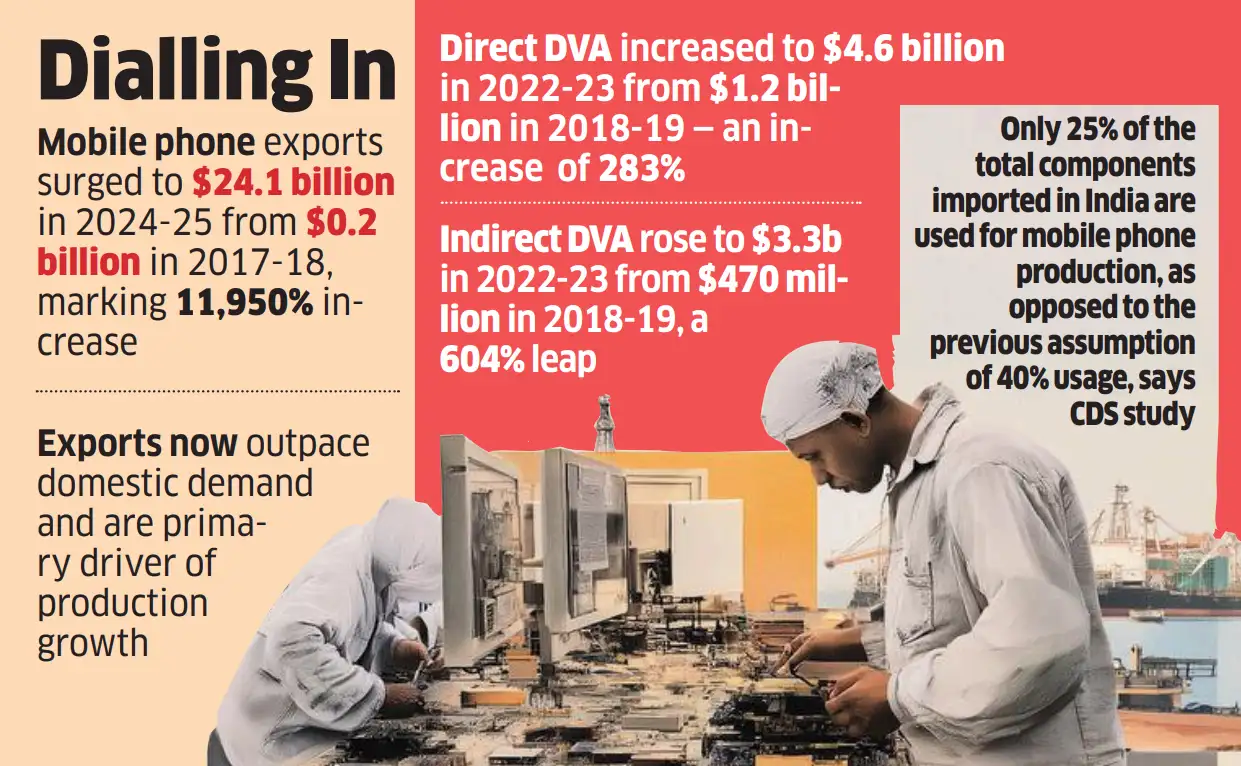New Delhi: The government should look at extending the production-linked incentive (PLI) scheme for mobile phone production to sustain the momentum of growing exports, even as domestic value addition, both direct and indirect, increased to 23% in 2022-23, amounting to $10 billion for mobile phone manufacturing, said a study conducted by the Centre for Development Studies (CDS).
According to the report, released on Wednesday in collaboration with the India Cellular and Electronics Association (ICEA), mobile phone exports surged to $24.1 billion in 2024-25 from $0.2 billion in 2017-2018, marking an 11,950% increase. Exports now outpace domestic demand and are the primary driver of production growth.
 ETtech
ETtechThe total domestic value addition (DVA) was estimated using the Annual Survey of Industries’ plant level data, commerce ministry’s export-import data bank and industry estimates, the report said. The direct DVA increased to $4.6 billion in 2022-23 from $1.2 billion in 2018-19, a 283% increase. Indirect DVA rose much higher, to $3.3 billion in 2022-23 from $470 million in 2018-19, a 604% leap.
“The PLI scheme needs to continue as long as we are able to address some of the cost disabilities that the manufacturing sector is facing. Once we reach the stage where we can see that these inefficiencies are removed, we can stop,” said C Veeramani, professor and director, Centre for Development Studies, Thiruvananthapuram. Government officials said the renewal of the mobile phone PLI scheme is still under discussion.
“We are discussing with the industry what their further requirement is and how to support them. The aim of the PLI scheme is to continue the drive towards self-reliance. This involves examining every item, every component which is used, including machines and materials, and all elements in the bill of materials to reduce dependence,” said an official. The CDS study said India has transitioned to a growing trade surplus in mobile phones, driven by increasing exports. The study also addressed scepticism around the reported trade surplus in the sector due to its heavy reliance on imported components and low-margin assembly-led nature.



